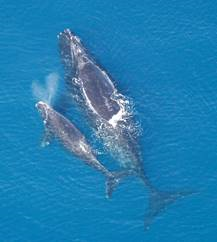
Did Romans hunt whales in the Mediterranean Sea?
Commercial whaling is believed to have started with Basque whalers ca. 1000 AD, ultimately resulting in the extirpation of right whales (Eubalaena glacialis) and gray whales (Eschrichtius robustus) from the eastern North Atlantic. An international research team – including researchers from the CNRS and the University of Montpellier 1 – used new molecular techniques to analyse old whale bones from archaeological sites associated with industrial Roman fish-salting plants in the Strait of Gibraltar. They found that 2000 years ago both gray and right whales were present there, probably entering the Mediterranean Sea to reproduce. This finding, published on the 11th July 2018 in the Proceedings of the Royal Society B, substantially expands the known historical range of both whale populations, and it raises the possibility that a forgotten Roman whaling industry contributed to their demise.
- 1At the Centre for Functional and Evolutionary Ecology (CNRS/Université de Montpellier/Université Paul Valéry Montpellier/EPHE) and the laboratory Archaeology of Mediterranean Societies (CNRS/Ministère de la culture/Université Paul Valéry Montpellier).


Other images can be obtained from Alexiane Agullo : alexiane.agullo@cnrs-dir.fr
Forgotten Mediterranean calving grounds of gray and North Atlantic right whales: evidence from Roman archaeological records, Ana S. L. Rodrigues, Anne Charpentier, Darío Bernal-Casasola, Armelle Gardeisen, Carlos Nores, José Antonio Pis Millán, Krista McGrath, Camilla F. Speller. Proceedings of the Royal Society of London B, 11 July 2018. DOI: 10.1098/rspb.2018.0961

